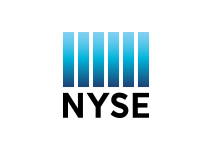By receiving and distributing market data, you become a distributor in the eyes of the exchange. This means that you may have to have an agreement with the exchange and pay fees.





There is a difference between licensing the rights to use the data with the data owner (the exchange) and buying a service to access the data (which could be the exchange if you go directly to them or could be your vendor). You pay the exchange for the license to the data and your vendor (i.e. Xignite) for access to that data.





Many factors come into play regarding agreements and fees when you get data from an exchange. The more data you get, the higher the costs and the licensing requirements. Make sure you don’t get overboard and simply match your solution to your requirements.
Delay (Delayed Quotes / Real-Time Quotes).
Depth (Late Sale / BBO / Level 2 / Depth of Book)
Breadth (Single Exchange / Consolidated Tape)
Source (NYSE / NASDAQ / BATS / etc.)
Type of User (Pro / Non-Pro)
Usage (Display / Non-Display / Wallboard / Web / etc.)
Control (Control of Access / Control of Display)
Understanding market data means understanding the key factors that will affect costs and functionality in your solution.
Delay
- Real-Time data is fee-liable and requires exchange agreements.
- Delayed data is often not fee liable, but licenses may need to be in place either way (ex NASDAQ).
- Historical data is often not fee-liable based on the delay policies, though access to historical data is often fee liable.
Depth
- Last Sale data is generally cheaper than BBO, Depth of Book, or Level 2 data for a given exchange.
Breadth
- Consolidated Tape data is fee liable (CTA, UTP).
- Direct Exchange data or alternative access to consolidated data is priced differently via various models.
- Exchanges can assist you based on your needs.
- Exchange-specific data is priced by each exchange using different pricing models.
Delays have a large impact on costs and licensing but also a significant impact on user experience.
- End of Day data is not fee liable in the US (with exceptions like Mutual Fund prices).
- Real-time data is always fee-liable.
Think about what the minimum requirements for your app are.

| Depth is simply the amount of information you get in your data feed. It ranges from only the price of the last sale or trade to details about all outstanding bids and asks and the name of market makers who placed those orders (Level 2 data). |
Depth can impact price as well as your ability to display the data to large user base (e.g. on a public web site). Make sure you determine what you really need. Chances are that Last Sale and BBO are all you need for your app. |
Level 2 is the top BBO from each Market Participant. Some exchanges also offer feeds with every single BBO from each participant at every price (e.g. NASDAQ TotalView). |

If you thought there were just a couple exchanges in the U.S., think again. There are many equity exchanges in the US and data feeds can include some or all of them. Wanting a consolidated feed can have a significant impact on costs—especially if you need real-time data. Exchange specific feeds provide more cost-effective alternatives that could work well for your use case.
Consolidated Feed
- Merges all feeds from all exchanges.
- Price is the latest price on any exchange.
- Volume is consolidated volume across all exchanges.
- Feeds are fee liable and subject to End-User Fees.
Exchange Specific Feeds
- Only includes trades/quotes from that exchange.
- Includes data for stocks listed on other exchanges.
- Price is from last trade on that exchange*.
- Volume is the sum of trades on that exchange.
- Liquidity and coverage vary based on market share.
- Pricing is set by each exchange.
About Listing
- The primary listing exchange is the main exchange were a security is bought/sold.
- This is the exchange where the IPO occurs.
- Not all exchanges list (only NYSE, NASDAQ, CHX and BATS do).
About Trading
- Exchanges receive orders from participants.
- Exchanges must by law provide best execution, which means routing orders to other exchanges.
- Market centers can execute orders for securities they do not list. Some are not even the first market center for securities they list.
- This means that exchanges have quotes for securities they do not list.

PROFESSIONAL SUBSCRIBER
- Any natural person who is either:
- Registered or qualified in any capacity with the SEC, the CFTC, and other organizations.
- Engaged as an "investment advisor" (whether or not registered or qualified).
- Employed by a bank or other organization exempt from registration to perform functions that would normally require registration or qualification.

NON PROFESSIONAL SUBSCRIBER
- Any natural person who is not a Professional Subscriber.



 Exchanges require detail reporting for:
Exchanges require detail reporting for:



